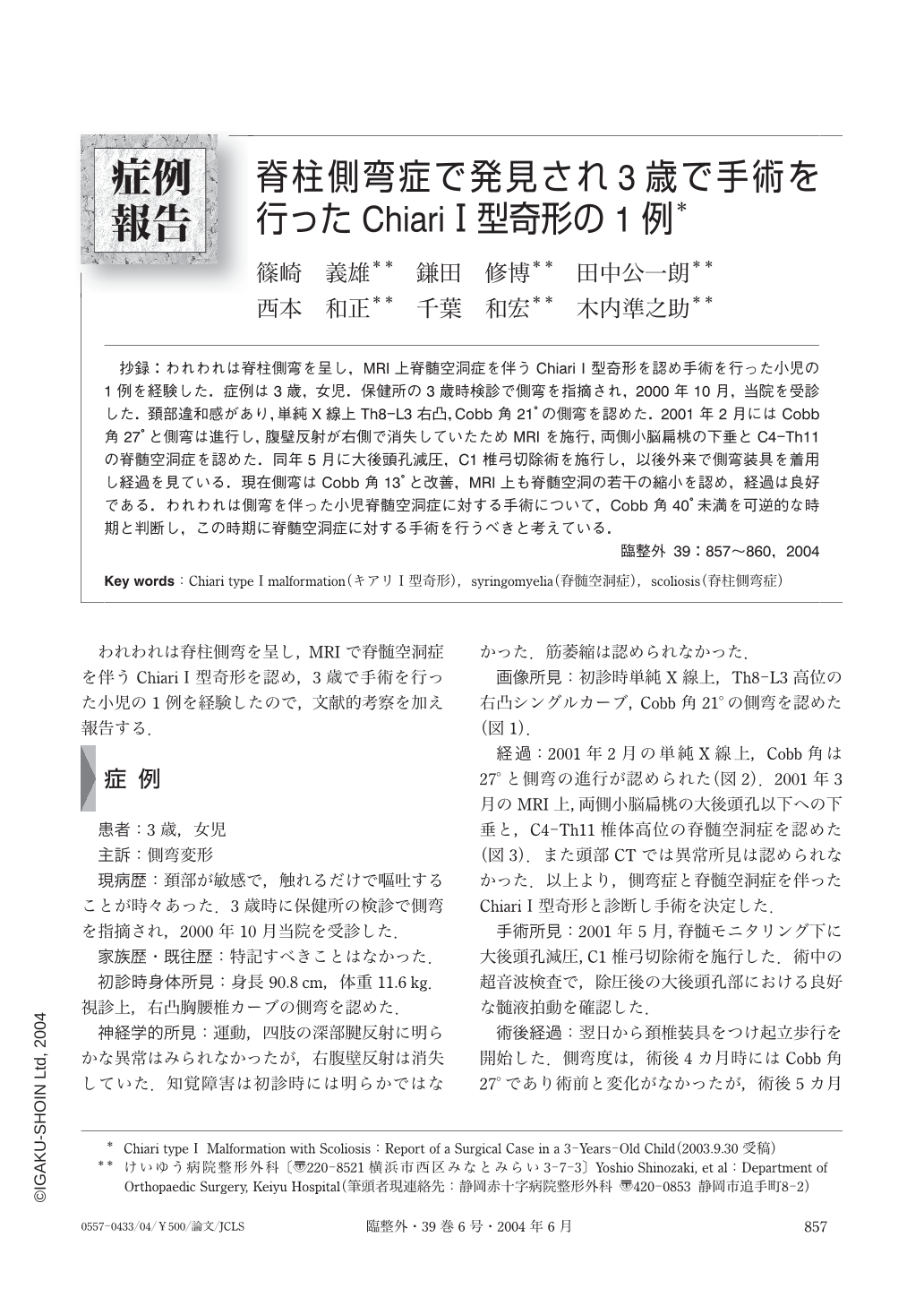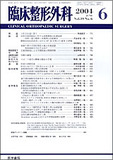Japanese
English
- 有料閲覧
- Abstract 文献概要
- 1ページ目 Look Inside
抄録:われわれは脊柱側弯を呈し,MRI上脊髄空洞症を伴うChiari Ⅰ型奇形を認め手術を行った小児の1例を経験した.症例は3歳,女児.保健所の3歳時検診で側弯を指摘され,2000年10月,当院を受診した.頚部違和感があり,単純X線上Th8-L3右凸,Cobb角21°の側弯を認めた.2001年2月にはCobb角27°と側弯は進行し,腹壁反射が右側で消失していたためMRIを施行,両側小脳扁桃の下垂とC4-Th11の脊髄空洞症を認めた.同年5月に大後頭孔減圧,C1椎弓切除術を施行し,以後外来で側弯装具を着用し経過を見ている.現在側弯はCobb角13°と改善,MRI上も脊髄空洞の若干の縮小を認め,経過は良好である.われわれは側弯を伴った小児脊髄空洞症に対する手術について,Cobb角40°未満を可逆的な時期と判断し,この時期に脊髄空洞症に対する手術を行うべきと考えている.
We report a surgical case of pediatric Chiari type Ⅰ malformation associated with scoliosis and syringomyelia.
A 3-year-old female was diagnosed with scoliosis at a health-care center and referred to our hospital in October 2000. The patient complain of a strange sensation in her neck, and an x-ray showed right thoracolumbar (T8-L3) scoliosis with a Cobb angle of 21°. The scoliosis progressed to a Cobb angle of 27° in February 2001, and a neurological examination revealed the absence of the superficial abdominal reflex on the right side. Magnetic resonance imaging (MRI) revealed Chiari type Ⅰ malformation and syringomyelia extending from C4 to T11. Suboccipital craniectomy and C1 laminectomy were performed in May 2001, and the scoliosis was treated conservatively with a scoliosis brace. The curvature has improved to 13°, and MRI has shown improvement in the syringomyelitic cavities.
We suggest that Chiari type Ⅰ malformation associated with scoliosis and syringomyelia should be treated by decompression surgery before the Cobb angle reaches 40° to prevent the need for spinal fusion surgery.

Copyright © 2004, Igaku-Shoin Ltd. All rights reserved.


